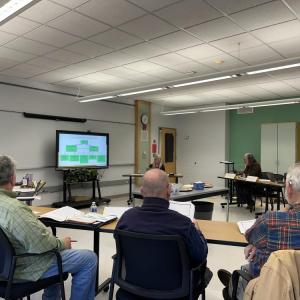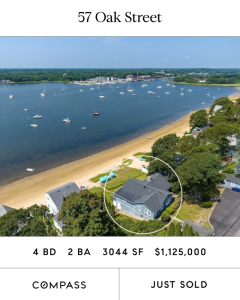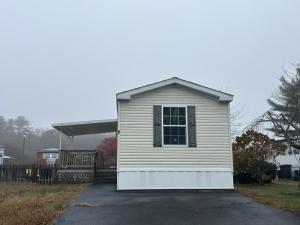School district estimates over $38 million needed for next school year
Wareham Public Schools' proposed $38 million budget is a $2.1 million increase from last year and includes millions in spending for out of district tuition and five proposed staffing changes.
The proposal for the $38,244,686 budget and how it will be distributed for the 2026-2027 school year, was presented in a School Committee meeting held Thursday, Nov. 20.
The budget is not yet finalized. The school district still needs to meet with Town Administrator Derek Sullivan and the Finance Committee to discuss the budget which voters will decide to approve or not at spring Town Meeting.
While most of the budget covers salaries and general expenses such as utility costs, there are five staffing changes proposed and roughly 11% of the proposed budget will go towards out of district placements, mostly for special needs students.
Each principal presented what changes to their respective school’s staff they would like to make. High school principal Scott Palladino would like to make current Athletic Director Ed Rodrigues a full-time employee, instead of only part-time.
“We’re not really able to move our athletic program forward, we’re just maintaining,” Palladino said.
Palladino added the cost associated with making the athletic director a full-time position would be around $30,000 and doing so would make expanding the athletics department easier.
“There is a large number of students that would like to have a cross country team,” he said. “There is a group of male students right now that would like to see volleyball brought back. They’re creating a petition now trying to get enough interest.”
At the elementary school, Principal Dan Sylvestre is proposing bringing in three more paraprofessionals into kindergarten classrooms and hiring a third assistant principal.
Sylvestre said a third assistant principal is necessary because the elementary school is seeing an increase in poor behavior, with around five behavioral issues reported per day.
“This year we’ve had 299 instances,” he said. “There were 641 reported instances last year and when you compare the 299 to the same time frame last year, there were 204.”
He added for each reported behavioral issue, one of the two assistant principals spends a minimum of two to three hours investigating and remediating the problem.
And Wareham Public Schools Superintendent Matt D’Andrea agreed with Sylvestre, saying when he visits the elementary school, the staff tells him there needs to be more administrative support.
“I have a pretty good gauge when I’m working with someone if they don’t have enough responsibility, have the right amount or too many responsibilities,” D’Andrea said. “When I go to the elementary school, they’re great, they’re hardworking, but I sense they’re a bit overloaded.”
Sylvestre said the three additional paraprofessionals are needed because it will help the district better support special needs kindergarteners.
Currently, each grade level at the elementary school has one paraprofessional for the nine classes within each grade. Sylvestre said that is a low paraprofessional to student ratio, adding he has never seen a kindergarten program that did not have a paraprofessional in each class.
“Right now we have one teacher for 23 students and they’re not just teaching, they're introducing technology, teaching fine motor skills, cutting, painting and more,” he said.
While in the classroom, paraprofessionals are working with students in small groups to get them not only additional academic help, but to form relationships with the kids as well.
“[Paraprofessionals] are with the kiddos every day to help them develop motor skills and social skills,” he said. “The kids do have to learn social skills and that’s where they learn a lot of them.”
Additionally, one of the biggest costs for the schools is tuition for Wareham’s 35 kids in out of district placements.
Under state law, when a special needs student requires services their local public school district cannot offer, the public schools will pay the student’s tuition to be placed in a specialized school.
D’Andrea said out of district placement costs are estimated to be $4,246,770 for the next school year.
Most of that cost comes from private special education tuition, which is estimated to cost the district just over $2.8 million next school year, and collaborative special education with an estimated cost just over $1.3 million.
Collaborative special education allows Wareham to bring in various organizations that provide school districts with specialized programs for special needs students.
School Committee chair Geoff Sweat added the cost to participate in the collaborative program per student is about $90,000 on average and about $150,000 to send a student to a private specialized school.
Wareham Public Schools also retains a high number of special education students. Across all grade levels, 27.9% of students are involved in the special education program.
The remaining $58,270 is used to send two students to Bristol County Agricultural High School. D’Andrea said even though Upper Cape Cod Regional Technical High School is the designated technical school for kids in Wareham, students can attend Bristol county if they offer a program upper cape does not.
Palladino added the kids that do attend Bristol county typically study equine science, the study of horses.
The school district also has to cover the cost of transportation for out of district placements. Director of Finance for Wareham Public Schools Kristin Flynn said this can cost anywhere from $60,000 to $100,000.
But the school district gets some money reimbursed from the state through a program called Circuit Breaker.
Under circuit breaker, the state will reimburse school districts spending money on high needs, special needs students.
Last year, the state reimbursed Wareham $2.1 million through the circuit breaker program and Flynn estimates the reimbursement for next school year would be around $2.6 million.






























